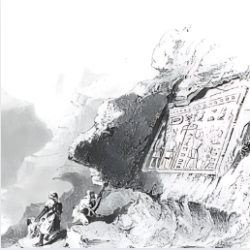 By Hozan Alan Senauke
By Hozan Alan Senauke
If you want to hear the old buddhas laugh, tell them what you think their plans are. I hesitate to speculate on future trends in Buddhist practice and thought. But in the Zen spirit of "making a mistake on purpose," I'll try.
Looking at dharma in the West over the last quarter century, I see several tendencies. As so-called globalization marches on -- for worse and occasionally for better -- Buddhist development in the West is also reflected in Asia. There is a curious feedback loop, and this itself is one of the trends. But I will come back to this issue.
At the risk of generalization, Western Buddhism is strongly shaped by three forces or three "marks" in Buddhist language: lay practice, the empowerment of women, and social engagement. These tendencies are intertwined. Of course, they don't reflect the entirety of Western Buddhism, but these marks are hard to ignore. Through them our dharma practice can offer liberation in the modern world.
Forty years ago in San Francisco, Shunryu Suzuki Roshi said to his young students, "You are not exactly lay people and not exactly monks." This kind of lay practice has been evolving in many of Buddhist centers and traditions in the West, something, as yet, very different from what one finds in Asia, where a hierarchical monastic model persists.
Although my own Soto Zen tradition has priest ordination -- I was ordained at Berkeley Zen Center in 1989 -- our essential practice is led by fathers, mothers, parents, and grandparents. People have busy jobs, bad backs, economic worries, and so on. Priests work in the world to support themselves. Lay leaders come to the zendo every morning at 5:30. Not quite priests, not quite lay. I see the same thing in many communities, across all traditions.
The feminization of Buddhism is a train that long ago left the station, but there is still a lot of distance to cover. Despite Shakyamuni Buddha's ordination of women and a message of gender equality encountered from time to time in Mahayana texts, the history of women's practice has been well-hidden, or more accurately, repressed. The all-too-slow empowerment of women in all areas of society, growing from the late 20th-century women's movement, is manifest in western dharma centers. In most practice places there is equity in participation and numbers of women and men. More importantly, at many centers, certainly in the Zen and Vipassana schools, there are as many women teachers as men. This insures the rootedness of gender equality in the generation to come. I also note there is a growing movement for a full women's ordination in Asian monastic traditions, both Theravada and Mahayana. The foundation of monastic male supremacy still exists, but it is crumbling at the base.
The third mark is social action, or the unity of dharma practice and social work -- compassion in action. When I came to work at Buddhist Peace Fellowship in 1991, engaged Buddhism stood outside the mainstream. Twenty years later, countless centers and groups are involved in prison work, chaplaincy, feeding the poor, and organizing against war. There is a wide view of engagement that includes social service and activism, or work for social change. I see this as both a responsibility that flows from the Bodhisattva vow to save all beings, and the realization in dharmic terms of spiritual values deeply embodied in western culture.
These developments are part of a process of integration. In early China, it was several centuries before Indian Buddhism was integrated and translated into vernacular Chinese, drawing on language, thought, and other religious and ethical traditions. Western culture naturally carries Judeo-Christian values that influence most of us deeply. Setting aside their God-centered belief system, so different from Buddhism, ethical teachings, along with principles of justice and compassion common to Christianity, Judaism, and Islam, fit with an evolving practice of Buddhism in the West.
Western practitioners must remember the gifts and sacrifices of Asian teachers who brought us the dharma in the last century. They gave themselves to us completely, but in our own self-centered and a-historic fashion, we can sometimes forget this.
And coming back to a point touched on earlier, it is fascinating to see how western practice, with the three marks outlined above, is making an impression on Buddhism in Asia and other parts of the world. I see this clearly in the ongoing dialogue between America and Japan, and in trends emerging in Thailand, Vietnam, Taiwan, India, and elsewhere. Many of these countries have a "Buddhist" culture, so the evolution of Buddhism there means the evolution of society as well.




